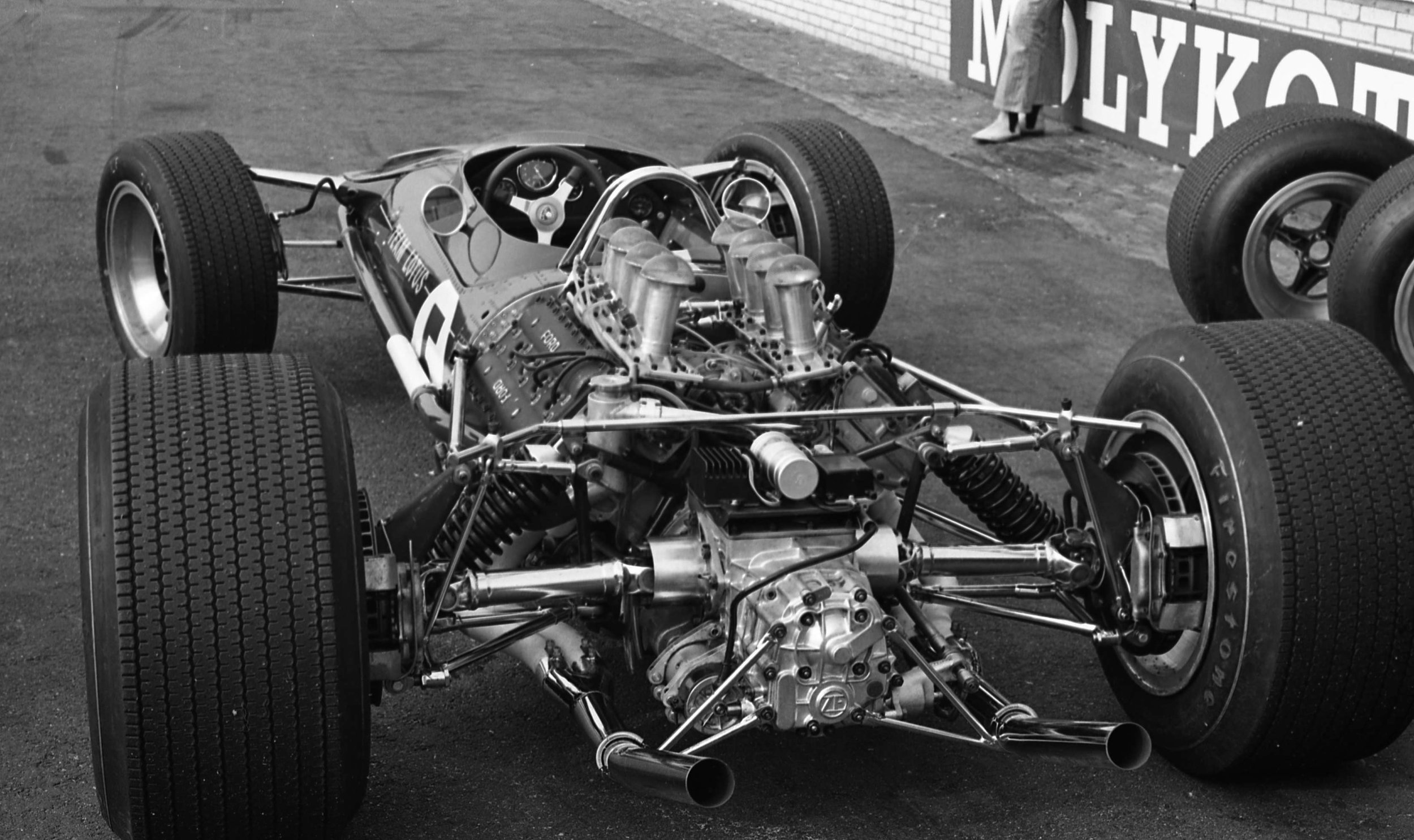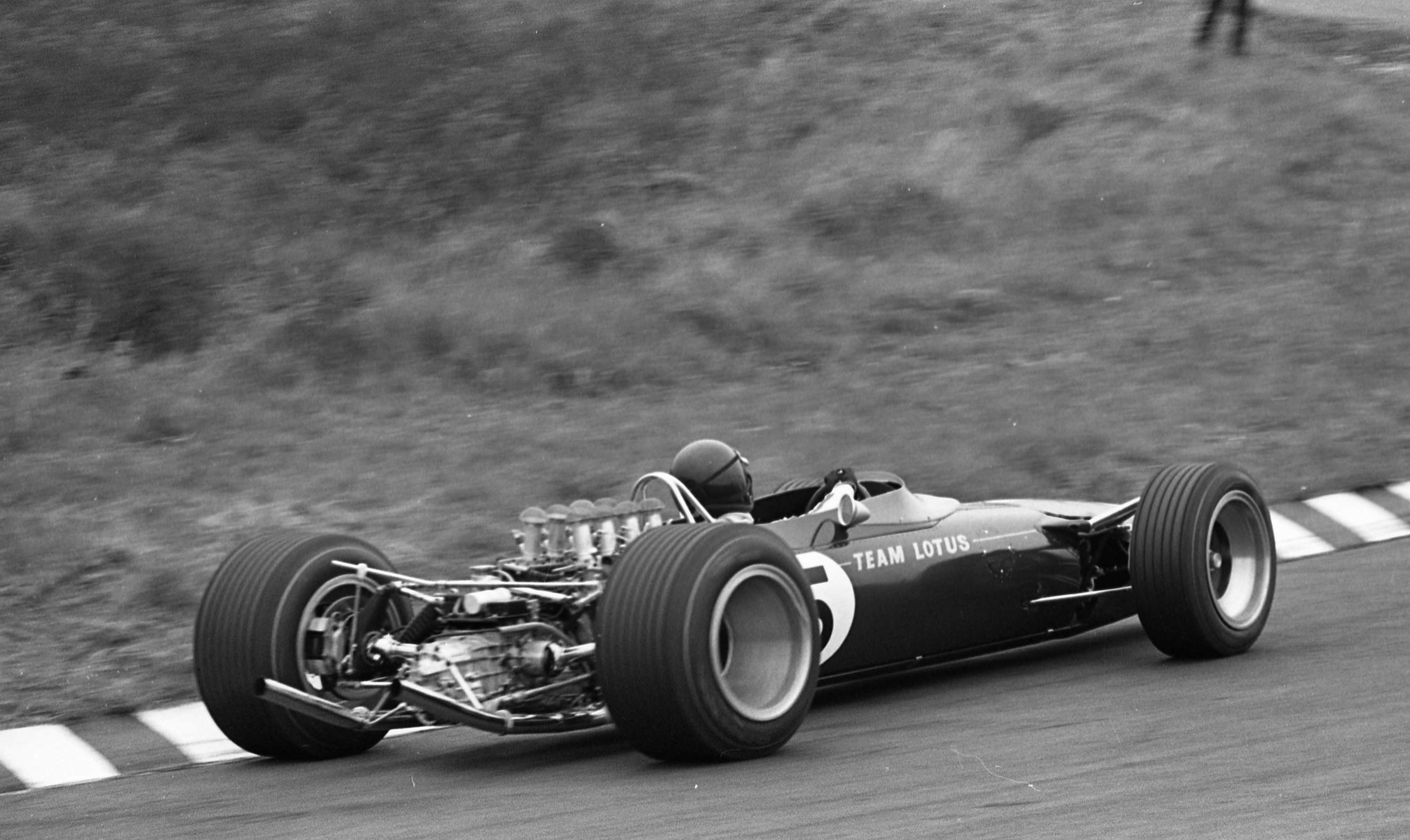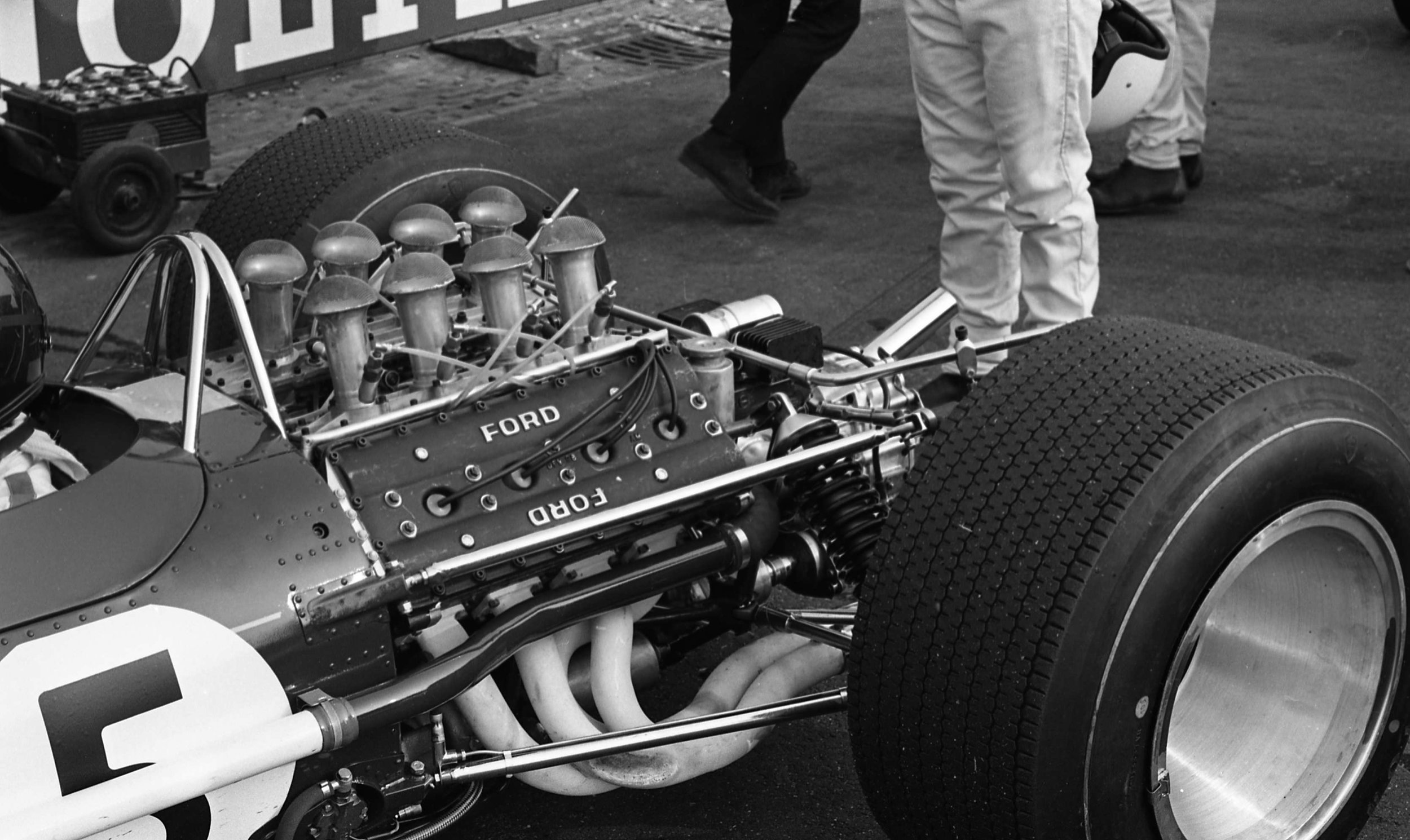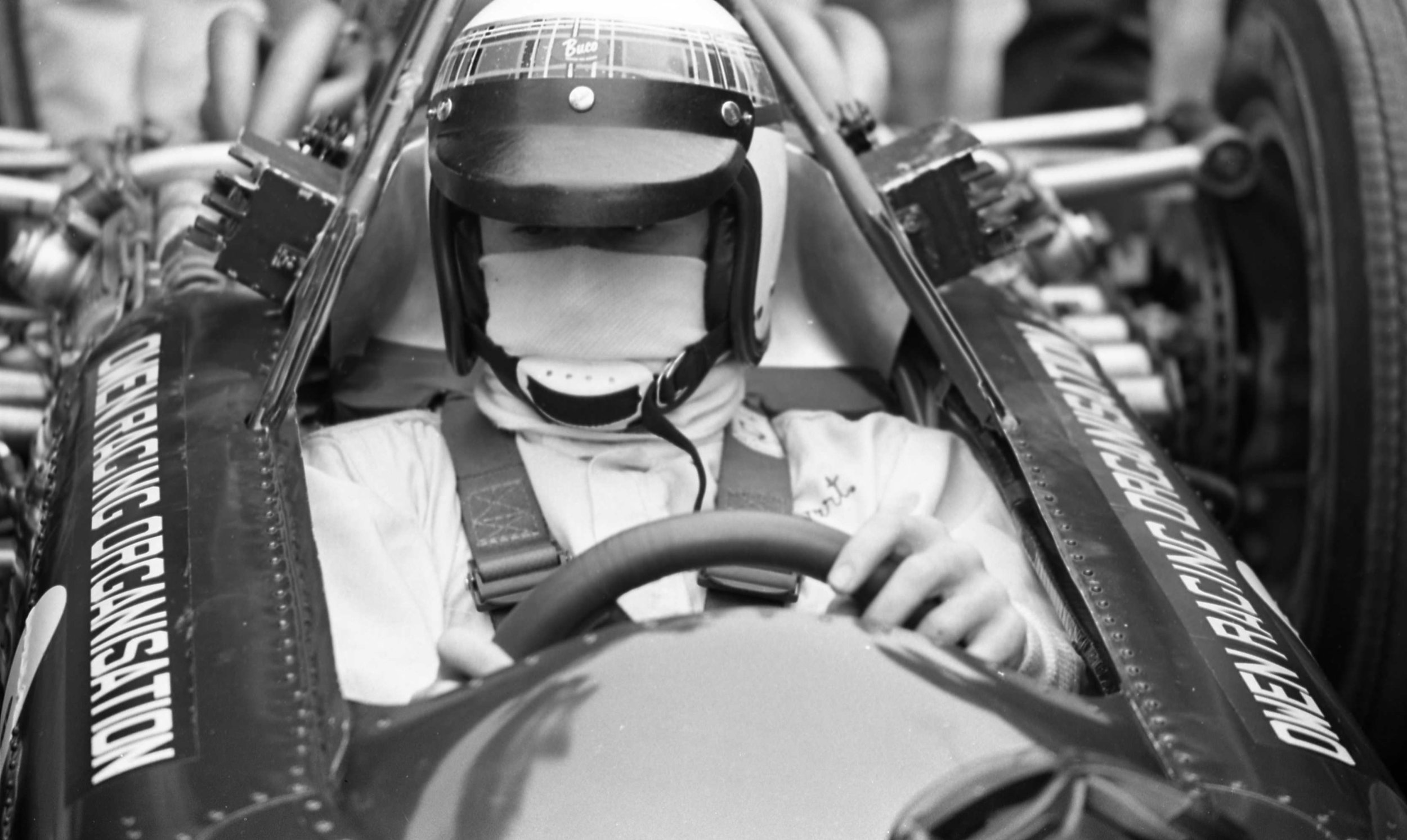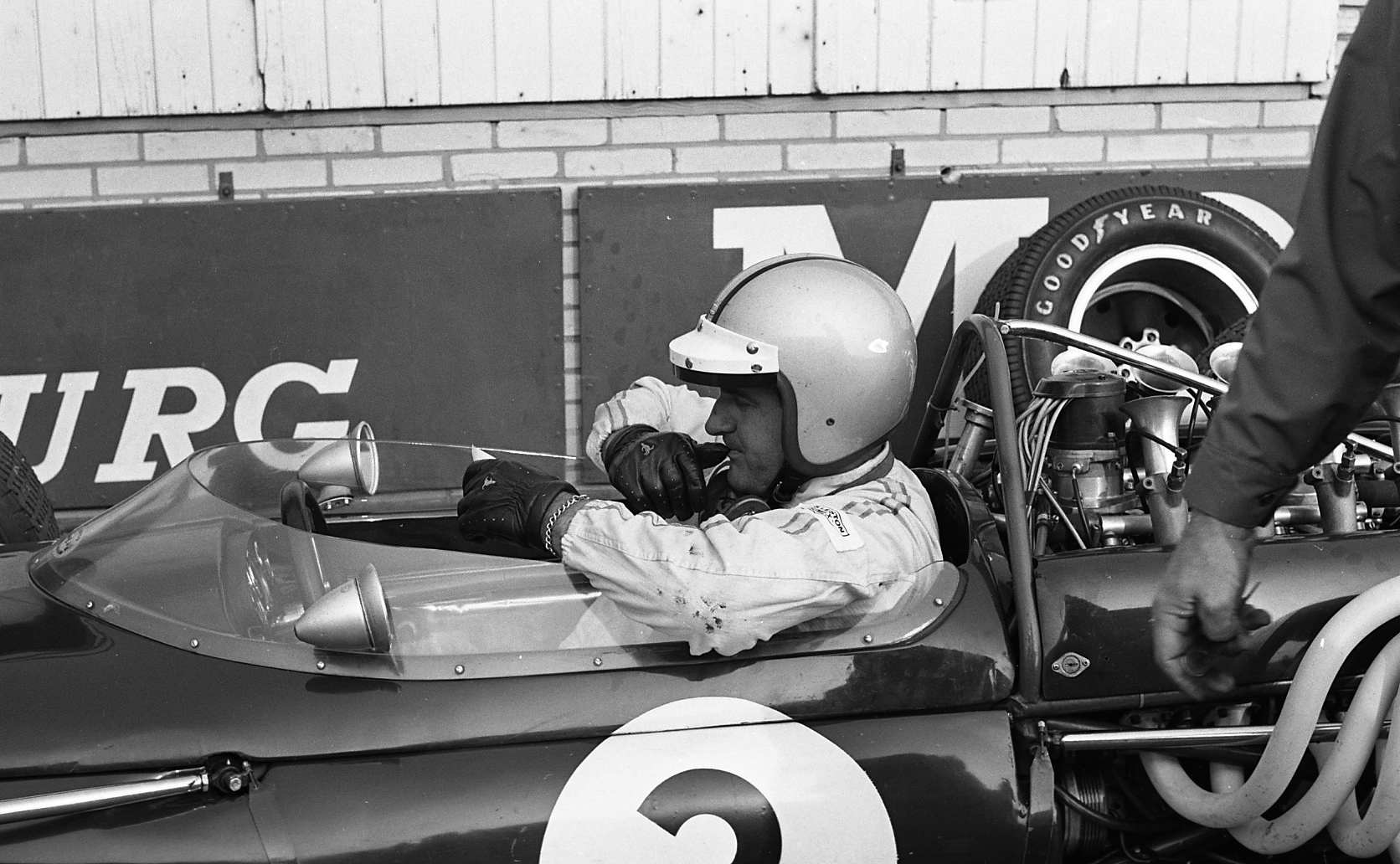Cooper transporter was parked in the paddock behind the pits. Graham Hill sits on the Lotus pit counter on right. The picture must have been taken from the grandstands opposite.
I asked Facebook and Twitter about this picture. That’s me behind Jim Clark’s Lotus photographing its new engine during practice at Zandvoort. I started commenting on it then mis-keyed and couldn’t find where it came from, but delving into my photographic archive I was pleased to find the pictures I was taking that day (below - Jim Clark’s legs on the right) in front of the Lotus pit.
The Dutch Grand Prix was a turning point in Formula 1. It was a first victory on its first appearance for the DFV Ford Cosworth V8 that became one of the most successful engines in motor racing. The Lotus 49 sealed the success of British-based teams that had dominated grands prix since 1959-1960, in particular Lotus, and brought Ford into F1. It demonstrated the engineering prowess of the British, in particular the genius of Colin Chapman and Keith Duckworth contradicting the dismissal by Enzo Ferrari and others that the UK teams were no more than “garagistes”. Other industry players followed Ford, bringing publicity and sponsorship that changed motor racing into a multi-billion activity.
How did I get here? In the 1960s The Guardian enjoyed a substantial student readership. Sports editor John Samuel invited motoring correspondent Adam Raphael to put motor racing on the sports pages but Adam was a political career journalist and recruited me instead. It was a pioneering departure for a quality broadsheet. Motor racing reached newspapers mostly after big accidents, or if Basil Cardew wanted to trumpet “another winner for Britain” in the Daily Express when Jaguar won Le Mans.
On the right of the top picture, veteran photographer Geoff Goddard talks to Keith Duckworth, designer of the DFV, along with my former colleague at The Motor, Maurice Rowe. I covered motor sport, Formula 1, sports car racing including Le Mans and international rallies for The Guardian and The Observer until 1980 (my report of the Dutch Grand Prix below). Lots of my motor racing pictures of the time are head-shots of drivers. Those of Jackie Stewart, Denny Hulme and Jack Brabham deep in conversation with Ron Tauranac are among those I took at Zandvoort. Curiously I took only a few of Jim Clark.
I always expected him to be there at the next race.
THE GUARDIAN MOTOR RACING
Jim Clark’s notable triumph
Zandvoort, June 4
A new car winning its first race is almost unheard of in Grand Prix motor racing. Yet this is what Jim Clark and the new Lotus Cosworth Ford have done in the Netherlands Grand Prix here today. Clark justified Ford of Britain’s £100,000 racing project on this fast circuit which winds through the sand dunes on the Dutch coast by taking the lead after 15 of the race’s 90 laps had been run, and never relinquishing it.
The two Brabhams of world champion Jack Brabham and New Zealander Denis Hulme challenged steadily, but were never a danger to Clark, who drove a steady and brilliantly judged race. But in spite of the apparent ease with which he won, the issue remained in doubt till the very end. The reliability of the new V-8 and the novel chassis structure were quite unknown, and the 80,000 people who crowded the sandy hillocks around the course were kept on tenterhooks throughout.
The practice session beforehand indicated that the Lotus Ford combination had the speed to win. Graham Hill, Clark’s team mate, set up the fastest practice lap in spite of ignition troubles which dogged his car throughout the second day’s practice. Clark’s own car had a wheel bearing changed which kept the mechanics busy and permitted the former world champion only a few laps to try out a car with which he was totally unfamiliar.
Hill took an immediate lead in the race with Brabham close behind, then Jochen Rindt (Cooper Maserati), Clark, Denis Hulme (Brabham), and Chris Amon (Ferrari). Hill’s car failed on lap 12 with valve trouble, enabling Brabham to pass to take the lead. Clark quickly took command and passed Rindt and Brabham into the lead on lap 15. He had been lying in close support while Hill made the running, getting to know the car and then just as firmly as he had taken first place, steadily built up a lead. He went fast enough to win but slowing up to conserve his new, untried engine.
PI.ACINGS – 1. J. Clark (Britain, Ford-Lotus) 2hr 14min. 45.1sec, average speed 101.414 mph: 2. J. Brabham (Australia, Brabham-Repco) 2-15-8.7: 3. D. Hulme (New Zealand. Brabham-Repeo) 2-15-10.8: 4. C. Amon (New Zealand. Ferrari) 2-15-12.4: 5. M. Parkes (Britain. Ferrari) one lap behind; 6. L. Scarfiotti (Italy, Ferrari) two laps.


